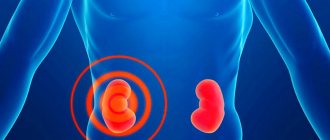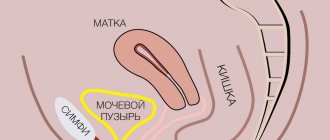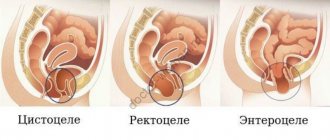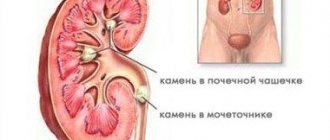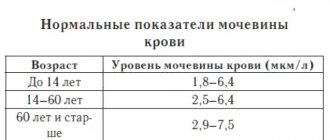Kidney prolapse, or nephroptosis, is a pathological condition that occurs when there is abnormal mobility of this organ. In this case, the kidney moves downward from its usual location and goes beyond the natural bed. Women are much more susceptible to this pathology than men. In addition, prolapse of the right kidney is more common than displacement of the left.
The kidneys should not move more than 5 cm even with breathing and physical activity. Often, a pathological displacement is found during an ultrasound of the abdominal organs completely by accident (for example, when checking the liver and gallbladder). A person is unaware of the disease, since it provokes pain only in 10% of cases.
Fact: The disease is more common in women aged 30-55 years, as well as in young children. It develops with a sharp drop in body weight and a low percentage of adipose tissue.
At CELT you can get a consultation with a urologist.
- Initial consultation – 3,000
- Repeated consultation – 2,000
Make an appointment
Indications
Surgical treatment is indicated in the following cases:
- Decreased ability to work due to pain.
- Significant mobility of the kidney.
- Hydronephrotic transformation.
- Lack of results in the treatment of pyelonephritis.
- Arterial hypertension.
- Venous hypertension and bleeding in the kidneys.
Contraindications
Surgery is not recommended for exacerbation of chronic diseases, pregnancy, intolerance to medications and anesthesia.
If a pathology is detected, it is strictly prohibited:
- To engage in the gym.
- Consume more than a gram of protein per 1 kg of body weight.
- Attend sparring in contact martial arts.
- Eat sour, spicy, smoked, fried foods.
What is the cause of kidney prolapse?
Nephroptosis is a consequence of weakening of the supporting apparatus of the kidney.
This may occur when:
- loss of elasticity of the abdominal wall due to repeated pregnancies;
- rapid and significant reduction in body weight;
- constant physical activity associated with lifting and carrying heavy objects;
- chronic severe cough;
- injuries with damage to the ligamentous apparatus of the kidney.
- genetic predisposition.
- prolonged stay in a high vibration zone.
- lack of timely treatment of infections.
- severe injuries (impacts to the kidney area or falls on the back from a great height).
- low intra-abdominal pressure due to lack of physical activity.
general information
The kidneys play an indispensable role in our body by cleaning the blood vessels and removing harmful toxins from them. The organs should be located in the area of the upper lumbar and lower thoracic vertebrae. They have the ability to shift up to 1.5 cm during movement or breathing.
If there is a deviation of 5 cm, painful sensations occur.
Most often, the disease occurs in pregnant women, thin children and the elderly due to age-related wear and tear of the muscular skeleton. The right kidney is located lower than the left, so in 80% of cases the displacement occurs on the right.
Causes of the disease
Healthy paired organs are located in the retroperitoneum at the lumbar level and are supported by several fixation mechanisms:
- elastic and elastic ligaments;
- dense connective membrane;
- sheets of fascia that fix the kidneys to the diaphragm;
- fatty tissue to absorb falls and shocks;
- vascular pedicle;
- lower back muscles;
- pressure inside the abdominal cavity.
If the fixation weakens, the organ moves downward under the influence of gravity. The process is slow, so it is rarely possible to detect the disease at the first stage.
Nephroptosis may be preceded by hereditary diseases, inflammatory processes in the body, urolithiasis, muscle atrophy, as well as:
- sudden change in weight (weight loss or obesity);
- violation of the diet (vegetarian protein-free diets);
- kidney surgery;
- pelvic injuries;
- the presence of tuberculosis, cirrhosis, oncology;
- curvature of the spine (scoliosis, hump);
- pregnancy and childbirth (large baby or twins);
- severe coughing attacks;
- physical inactivity, immobility (coma, disability).
The disease can be triggered by prolonged carrying or lifting of heavy objects, as well as intense exercise.
What are the symptoms of kidney prolapse?
The most common manifestation of nephroptosis is pain in the hypochondrium or iliac region. The intensity of pain directly depends on the degree of prolapse of the kidney.
- Severe pain in the lower back due to the accumulation of urine and blood in the kidney tissues. Pain is more pronounced in a standing position. Lying down they go away completely.
- Blood during urination appears due to the destruction of blood vessels, as strong twisting occurs.
- Pain in the lower abdomen, thighs, or pelvic organs is caused by pressure on the nerve endings due to the displacement and enlargement of the kidney.
- Significant disruption of the gastrointestinal tract is caused by increased stimulation of the nerve endings located near the displaced kidney.
- The flu-like state and weakness are caused by an increase in the volume of toxic substances in the blood due to the fact that the kidney gradually loses its basic function.
- With further development of the disease, the pain becomes constant in an upright position of the body, but weakens when lying on the back.
- A severe degree of kidney prolapse is characterized by constant severe pain, sometimes reminiscent of renal colic. In addition, periodic nausea and vomiting may bother you, and complications may appear in the form of pyelonephritis, arterial hypertension, neurological pain radiating to the buttock or leg, etc.
Consequences of pathology
The danger of nephroptosis is that the organ can twist, pinching the blood vessels, after which inflammation and stone formation begin. This worsens a person’s quality of life and affects his health. Possible consequences of nephroptosis:
- Development of infectious diseases of the genitourinary system
. - Urolithiasis disease
. The stones cause severe pain. - Wrinkling
. Deformation of veins and arteries leads to poor blood supply. The kidney begins to wrinkle, mummifies and the body begins to perceive it as a foreign body. - Pregnancy problems
. Due to the increased load on the body, diseased kidneys do not deliver fluid with oxygen. As a result, the child suffers intrauterine retardation, and the woman may have a miscarriage. - Acute failure
. The body cannot utilize harmful toxins, which threatens uremic intoxication or the onset of coma. - Venous hypertension
. Due to the lengthening and twisting of the vascular pedicle, the outflow of blood is disrupted. The walls of the blood vessels become thinner and burst.
Other possible complications include secondary purulent infection and abscess. Also, patients are often haunted by a sharp increase in pressure by 30-40 mm. Pressing pain in the temples occurs, and an attack of hypertensive crisis is possible.
Methods for detecting nephroptosis
To identify the disease, laboratory methods are used, such as:
- Analysis of urine
. Turbidity, sediment, predominance of red blood cells and lymphocytes indicate an inflammatory process in the kidneys. - Kidney ultrasound
. Ultrasound diagnostics makes it possible to assess the structure of the organ and the degree of its displacement. - Kidney MRI
. Allows you to detect stones or cancer. Identifies the cause of the disease.
These studies help not only establish an accurate diagnosis, but also mean the correct treatment.
How is kidney prolapse diagnosed?
There are 4 diagnostic methods used:
- General urine analysis.
- Ultrasonography.
- Urography.
- Palpation.
The main method for detecting nephroptosis, which is used in the multidisciplinary CELT clinic, is ultrasound examination. With its help, you can determine the presence of the disease, the stage of kidney prolapse, and also assess the impairment of its function. Additional information to clarify the diagnosis is also provided by an X-ray examination of the kidneys using a contrast agent - excretory urography.
Lifestyle
When organ prolapse occurs, it is strictly forbidden to drink alcohol or break the diet. Sweets, junk food, and carbonated drinks contain huge amounts of trans fats and preservatives. Eating fast food contributes to the appearance of plaques in blood vessels, obesity and kidney dysfunction.
To prevent complications, you should follow the recommendations of doctors, give up bad habits, reconsider your lifestyle and exercise. You should also not swim in open waters that have not been treated. Such places contain a large number of bacteria.
Our doctors
Kochetov Sergey Anatolievich
Urologist, Candidate of Medical Sciences, doctor of the highest category
34 years of experience
Make an appointment
Mukhin Vitaly Borisovich
Urologist, Head of the Department of Urology, Candidate of Medical Sciences
34 years of experience
Make an appointment
Khromov Danil Vladimirovich
Urologist, Candidate of Medical Sciences, doctor of the highest category
35 years of experience
Make an appointment
Perepechay Dmitry Leonidovich
Urologist, Candidate of Medical Sciences, doctor of the highest category
40 years of experience
Make an appointment
What is the treatment for nephroptosis?
Laparoscopic nephropexy
- Cost: 100,000 - 135,000 rubles.
- Duration: 90 – 120 minutes
- Hospitalization: 3-4 days in hospital
More details
If kidney prolapse is diagnosed early, therapy includes wearing a bandage. Our specialists select it on an individual basis, which guarantees the best results.
If nephroptosis has already reached a pronounced stage and leads to serious dysfunction of the kidney or surrounding internal organs, then the question of surgery is raised. Usually it involves fixing the kidney in its natural position.
Prognosis and possible complications
Without proper treatment, the disease can lead to partial or complete loss of ability to work. If you contact a specialist in a timely manner and follow all recommendations, the prognosis is favorable.
If you ignore poor health and delay going to the urologist, then frequent complications of kidney prolapse are:
- Urolithiasis disease.
- Hydronephrosis.
- Chronic pyelonephritis.
- Kidney failure.
- Hypertension.
- Spasms or renal colic.
Nephroptosis in the later stages is very dangerous, as there is a risk of compression of the sciatic nerve, as well as shrinkage of the kidney. The earlier the pathology is detected, the better the prognosis.
Surgery for prolapsed kidneys
In the absence of contraindications and stable results with conservative treatment, surgical intervention is prescribed. There are 4 types of operations in total:
- Attaching the organ to the ribs with muscle flaps.
- Fixation with synthetic materials.
- Attachment of the fibrous capsule by connective tissue.
- Fixation to the ribs using a suture in the kidney.
After surgery, you must remain in bed for 14 days to avoid relapse.
Timely detection of nephroptosis and its adequate treatment is the key to a quick and effective solution to any problems associated with kidney prolapse. To diagnose the disease, you must consult a urologist at the CELT multidisciplinary clinic.
Disease prevention
Kidney prolapse can be avoided by following these recommendations:
- watch your posture;
- do not use diets or drugs to quickly lose weight;
- do exercises to strengthen the muscles of the pelvis and abdomen;
- do not get carried away with strength training;
- use a bandage when lifting weights, as well as during pregnancy;
- exclude fast food from your diet.
Preventive examinations play an important role in the early detection of diseases. Self-medication in this case will only lead to a hospital ward and surgery.
If you begin to experience pain or discomfort in the lumbar region, and also if your activities involve standing on your feet for a long time or lifting heavy objects, then be sure to find time to visit a urologist.
Our services
The administration of CELT JSC regularly updates the price list posted on the clinic’s website. However, in order to avoid possible misunderstandings, we ask you to clarify the cost of services by phone: +7
| Service name | Price in rubles |
| Ultrasound of the kidneys and adrenal glands | 2 700 |
| Urography intravenous | 6 000 |
| Laparoscopic nephropexy | 100 000 — 135 000 |
All services
Make an appointment through the application or by calling +7 +7 We work every day:
- Monday—Friday: 8.00—20.00
- Saturday: 8.00–18.00
- Sunday is a day off
The nearest metro and MCC stations to the clinic:
- Highway of Enthusiasts or Perovo
- Partisan
- Enthusiast Highway
Driving directions
What can you eat
The goal of the diet is to sharply reduce the content of extractive substances in order to radically reduce their irritation of the diseased kidney and increase the removal of under-oxidized metabolic products from the body and have an anti-inflammatory effect. Nutrition for nephroptosis should be varied and contain all the necessary substances. You need to eat six times a day, drink about 1 liter of water daily. It is better to prepare foods without adding salt, and if you use it, add it at the end of cooking (up to 5 g of salt per day is allowed). The diet implies the complete exclusion of the following products and dishes:
- canned food,
- carbonated drinks,
- pickles and smoked meats,
- cakes, creams, sour cream, cream.
The patient needs to include milk, fermented milk products, cottage cheese, vegetables, fruits and a variety of cereals in his daily diet. The diet should be high in calories, but overeating should be avoided.
